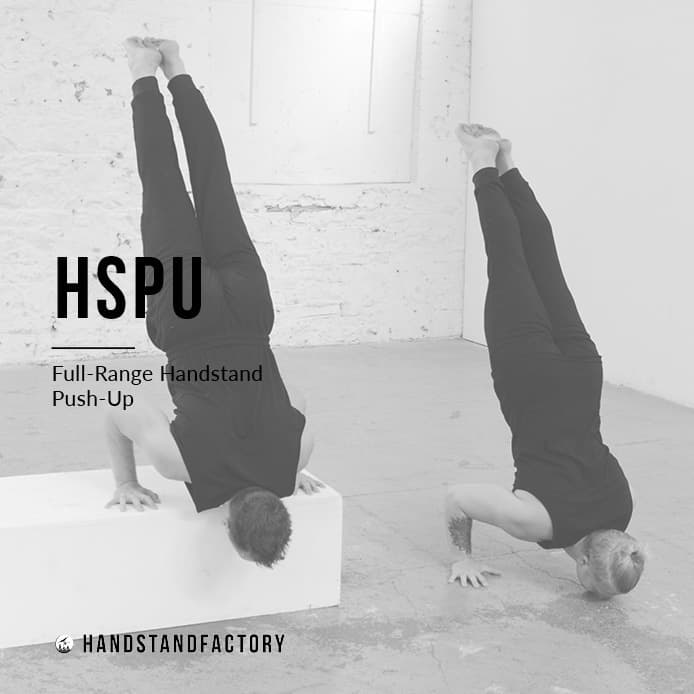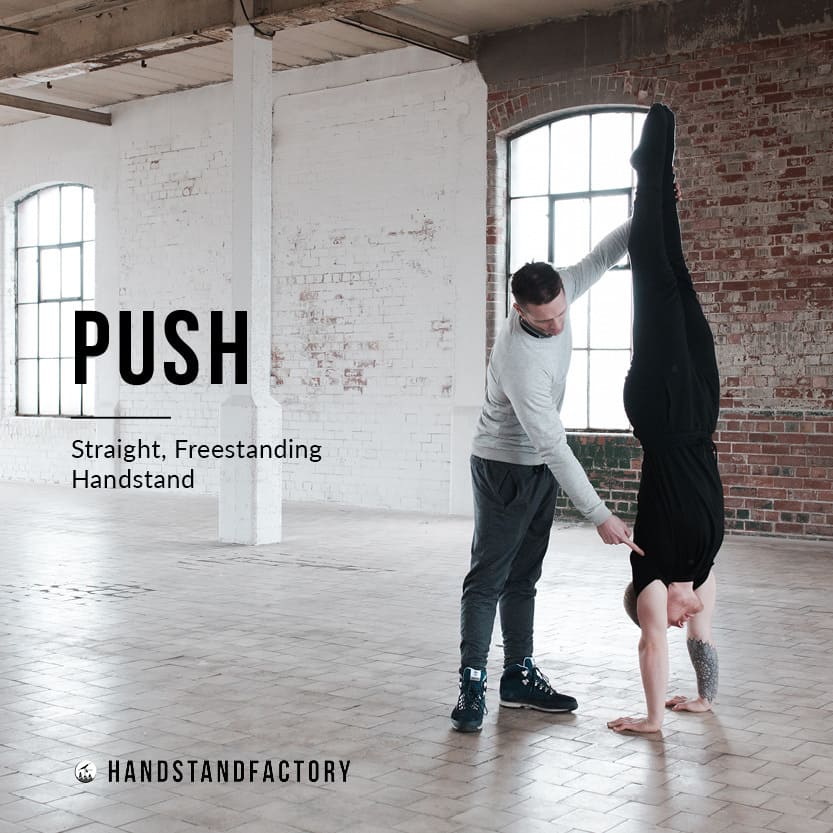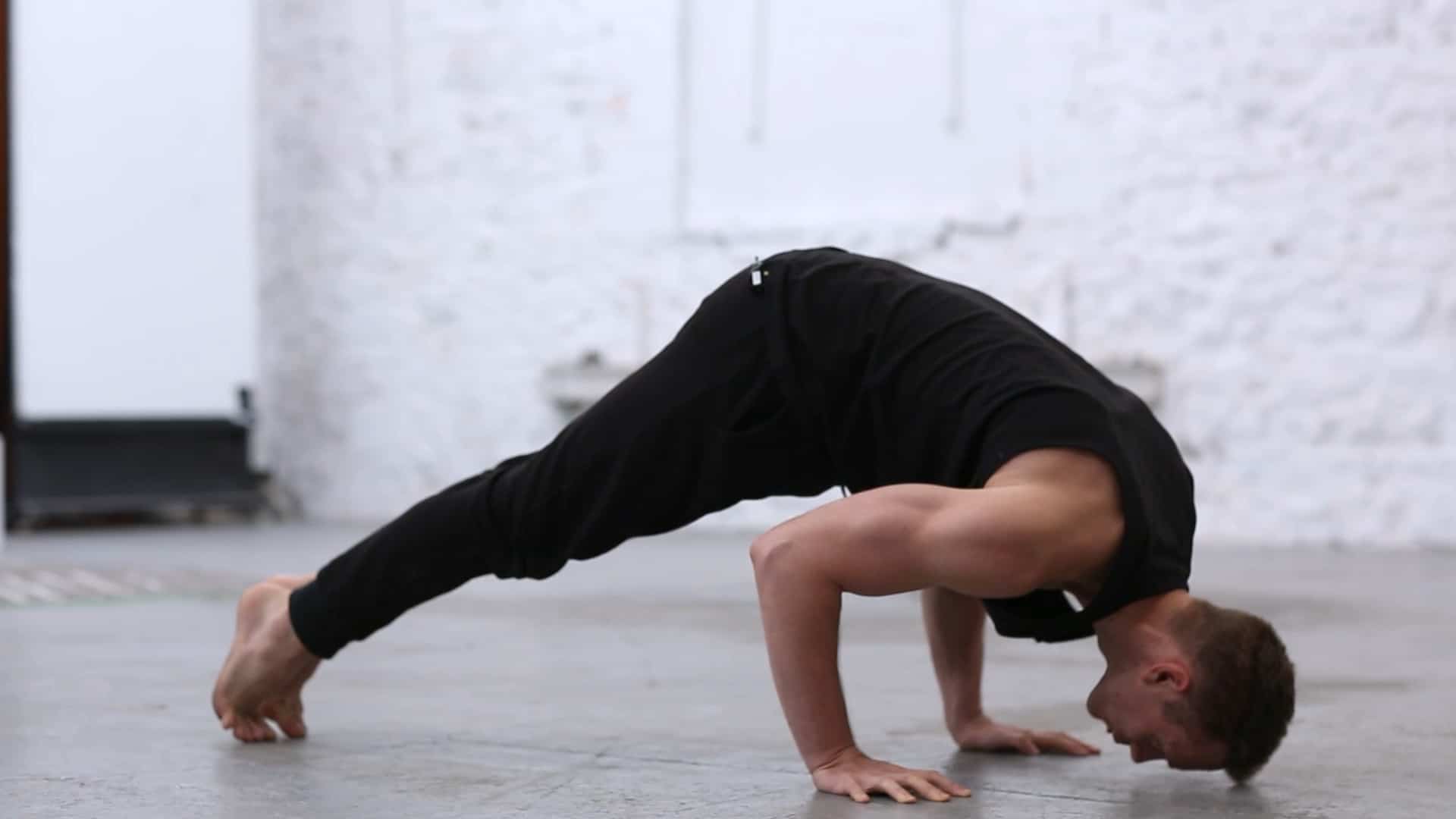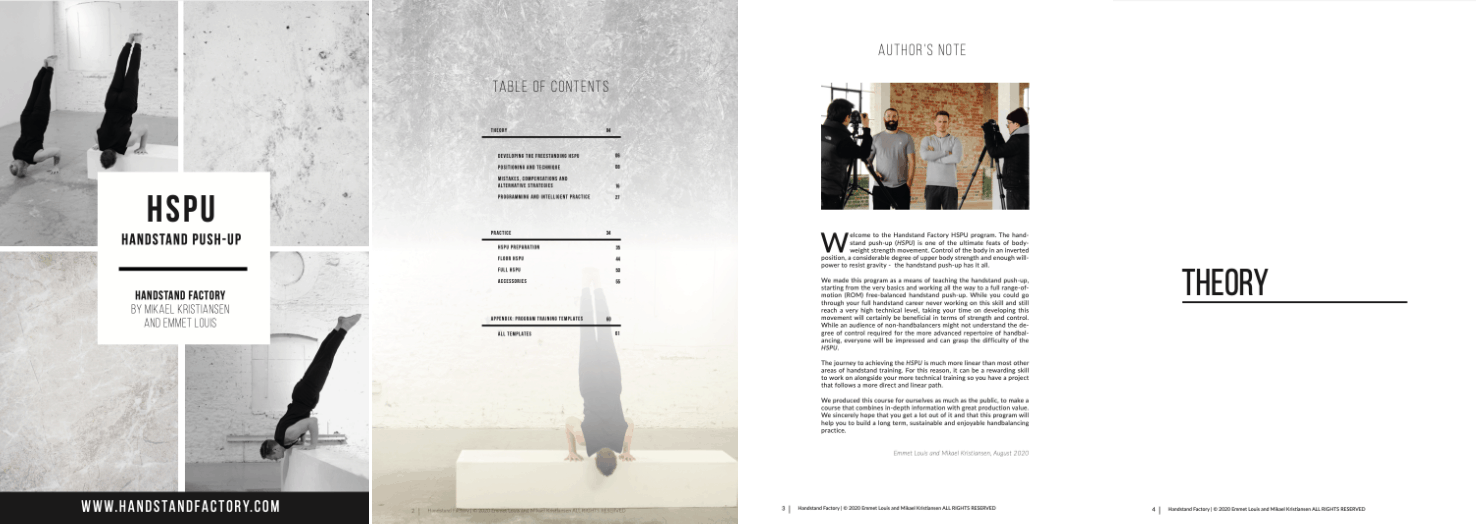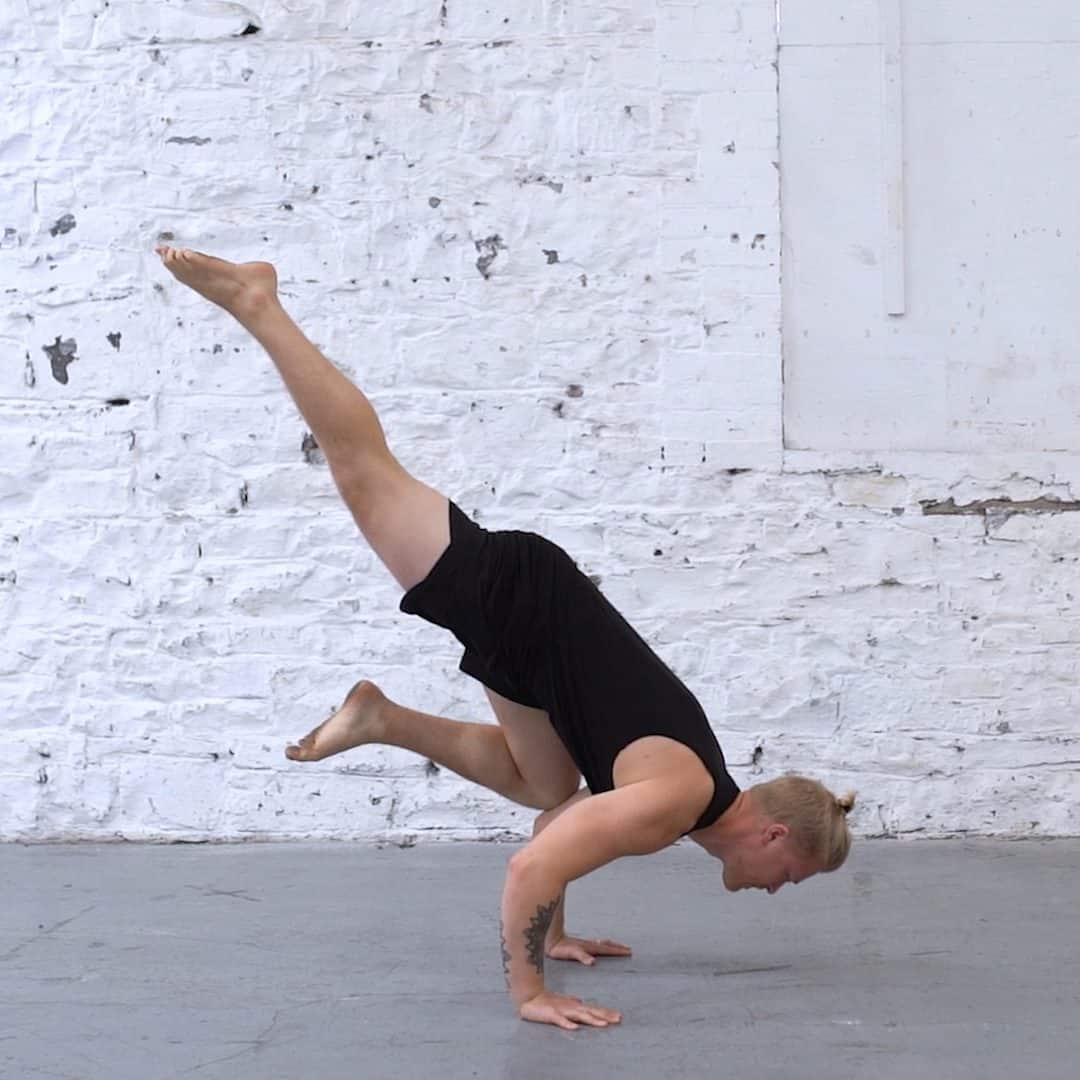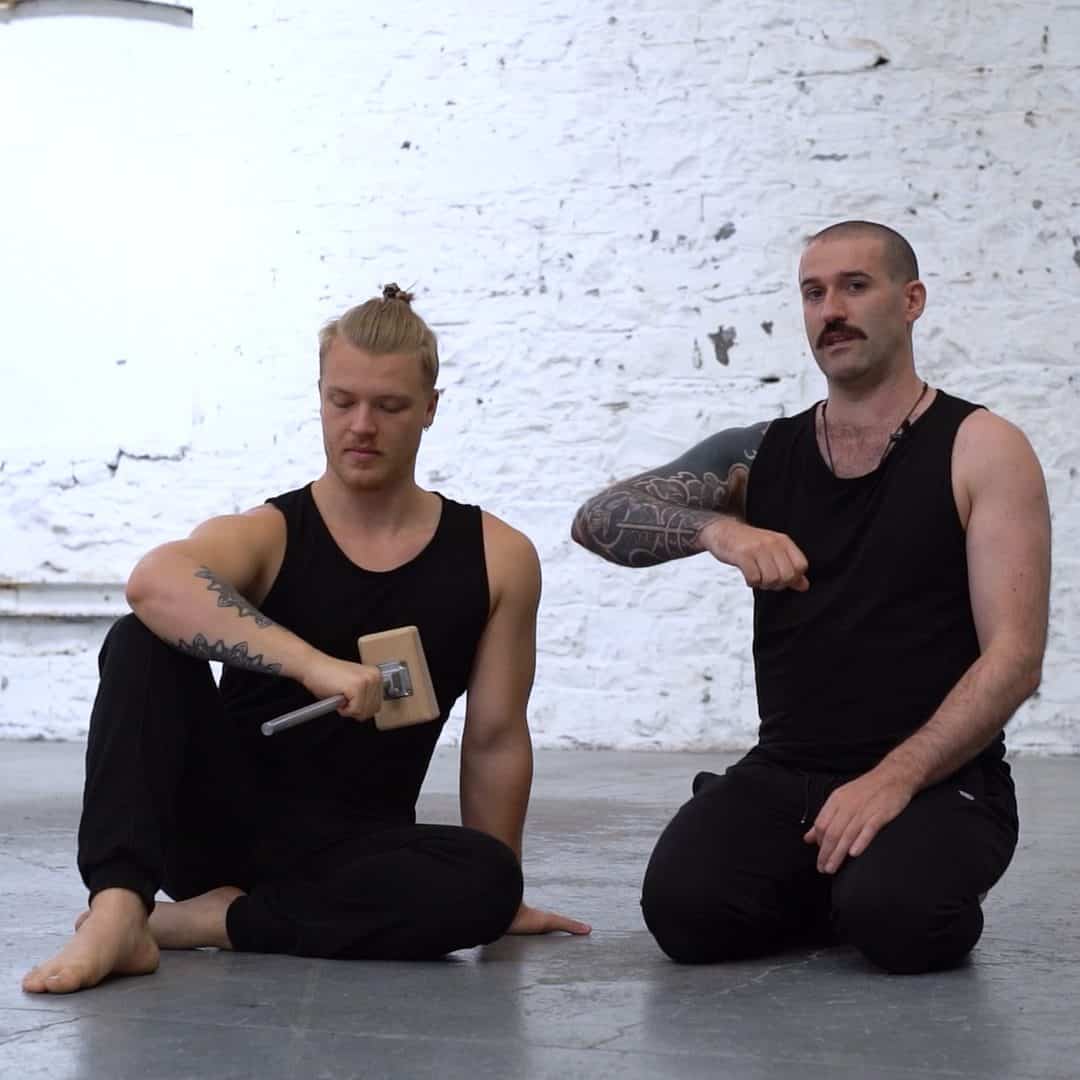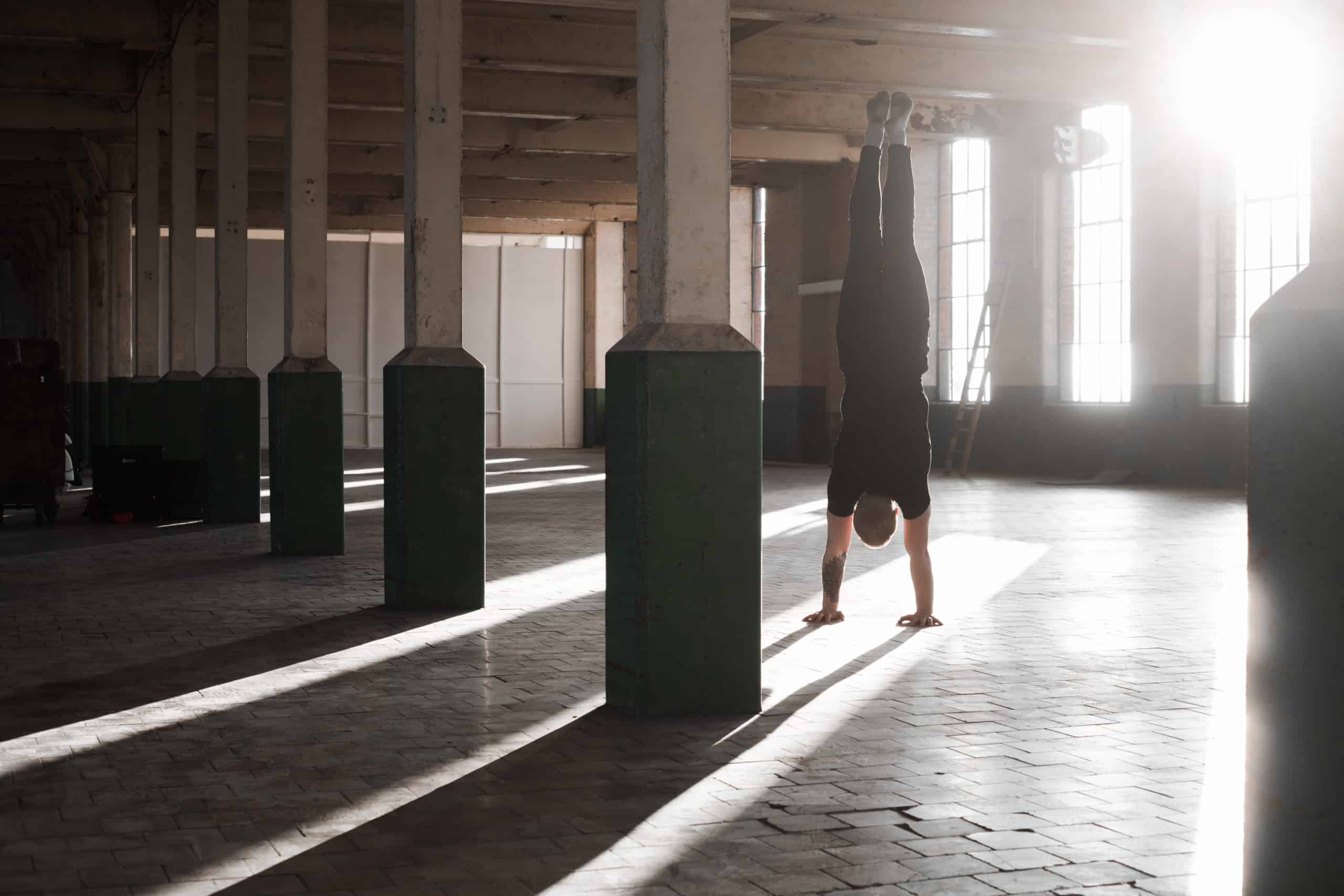Train all things tuck! Join July’s Focus: Get Tucked Up starting July 7th!
Freestanding Handstand Push-Up
The HSPU program is designed to teach you the full range, freestanding handstand push-up. In our approach, we look at the handstand push-up as a movement requiring both precision and skill as much as strength. Our approach is to start with simple set-ups, then slowly increase capacity and then introduce more variables. We begin with building a base of strength and awareness of the required shoulder positions, and then introduce free balancing movements. Then, once sufficient skill has been gained, we start using the free balancing movements as strength exercises.
Achieve the Full Range Handstand Push-Up
The HSPU program covers two major achievements; the first being the freestanding handstand push-up on the floor, and the second the full range of motion HSPU itself. While these are difficult skills to learn, they have a more linear progression route than other advanced balancing skills like the one-arm handstand or the Stalder press to handstand. The exercises in this program follow a roughly linear difficulty with each level requiring some degree of proficiency to start working on the next one. In these terms there’s quite a rewarding progression to this skill in terms of time put in, work and reward. The program follows our method of introducing skills with reduced variables and then increasing both complexity and physical demand until the skill is achieved. For the HSPU, we will be looking at the variables of strength training, frequency, intensity and volume as well as the handbalance variables of balance, refinement and elegance.
By the end of this program, our aim is for you to be able to perform the handstand push-up from beginning in a handstand on a raised surface, parallettes, dip bars, a box or platform etc. and lower to a fully bent arm position, pause and then push back up to a fully locked elbows and shoulders elevated handstand.
$145Add to cart
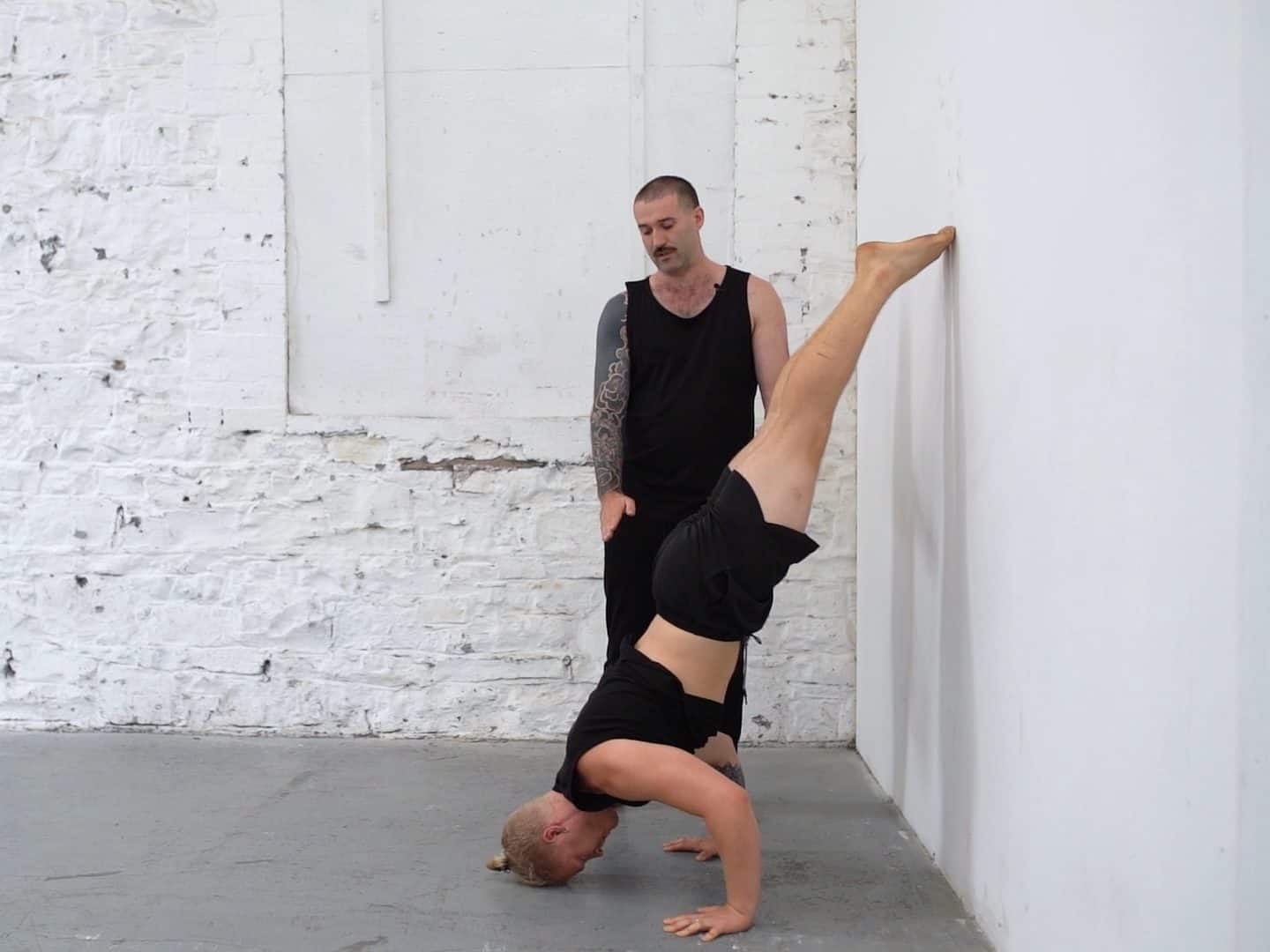
What it’s like to use the Handstand Factory programs:
It’s like being in school and having lecture, lab and study – between the podcast, training, and text. I’m learning so much… really feels more personalized, “connected” and HUMAN.
Joyce – @cirquepath, San Fransisco, USA
Are You Ready To Learn the HSPU?
HSPU is a supplemental strength program for intermediate handbalancers who are comfortable in a freestanding handstand. As such, in order to get the most out of this program we recommend you meet these suggested benchmarks:
Recommended Benchmarks
Strength Training and Accessories in HSPU
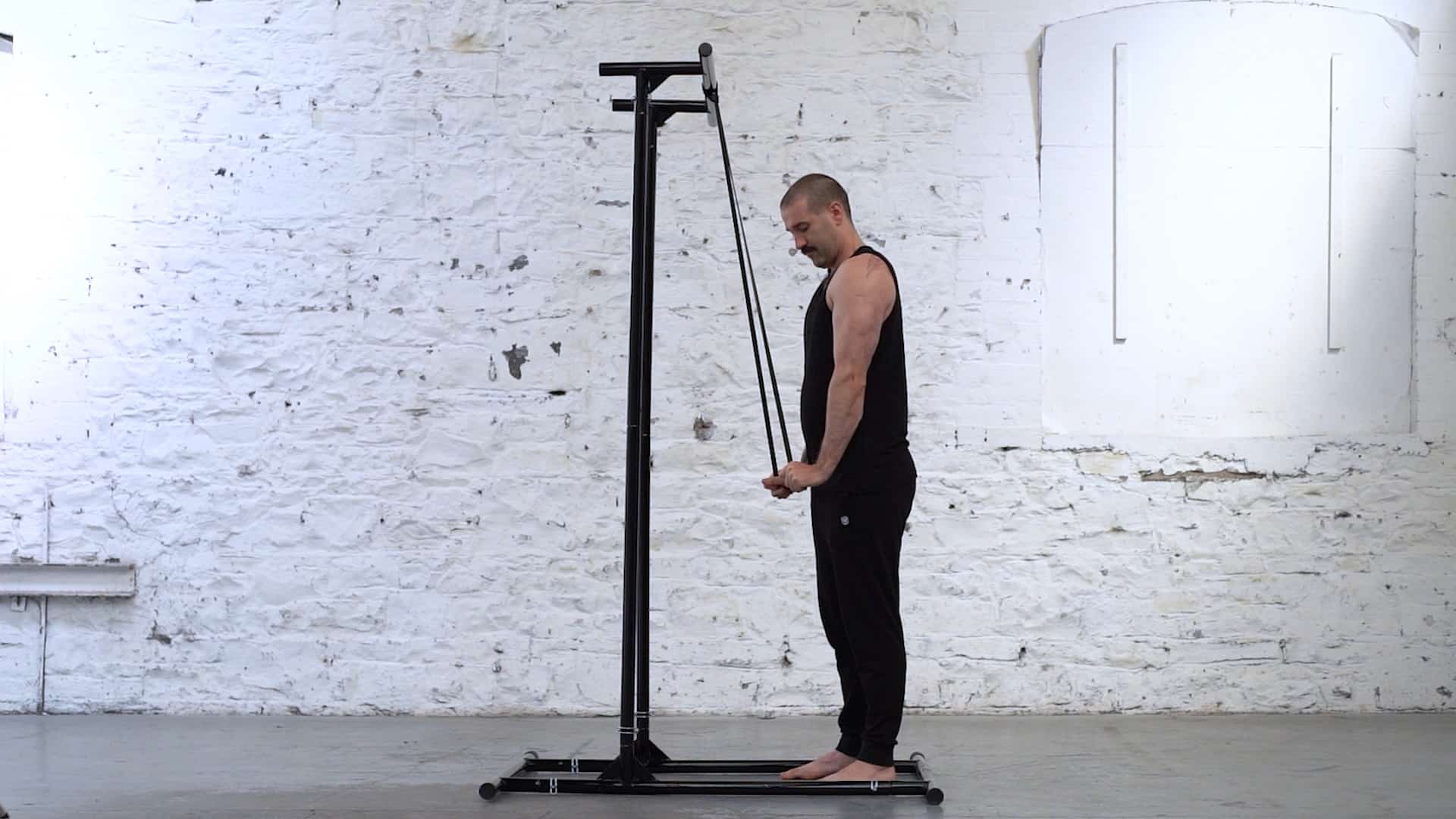
The HSPU program is designed as an add-on strength skill between Push and the more advanced programs like Push Harder, but it can be trained anywhere along your handbalance training. For the HSPU, we will be looking at the variables of strength training, frequency, intensity and volume as well as the handbalance variables of balance, refinement and elegance. Additionally, our programming includes accessory exercises that provide stimulus to the areas that do not get direct stimulus from the main exercises. The accessory exercises in this program were selected as they train the muscles and movement planes that generally show the greatest amount of energy leaks across a broad population. An energy leak is when the body is unable to maintain the correct position required for the technically correct performance of the HSPU. In this program, we have selected external rotation exercises that match up with the handstand push-up.
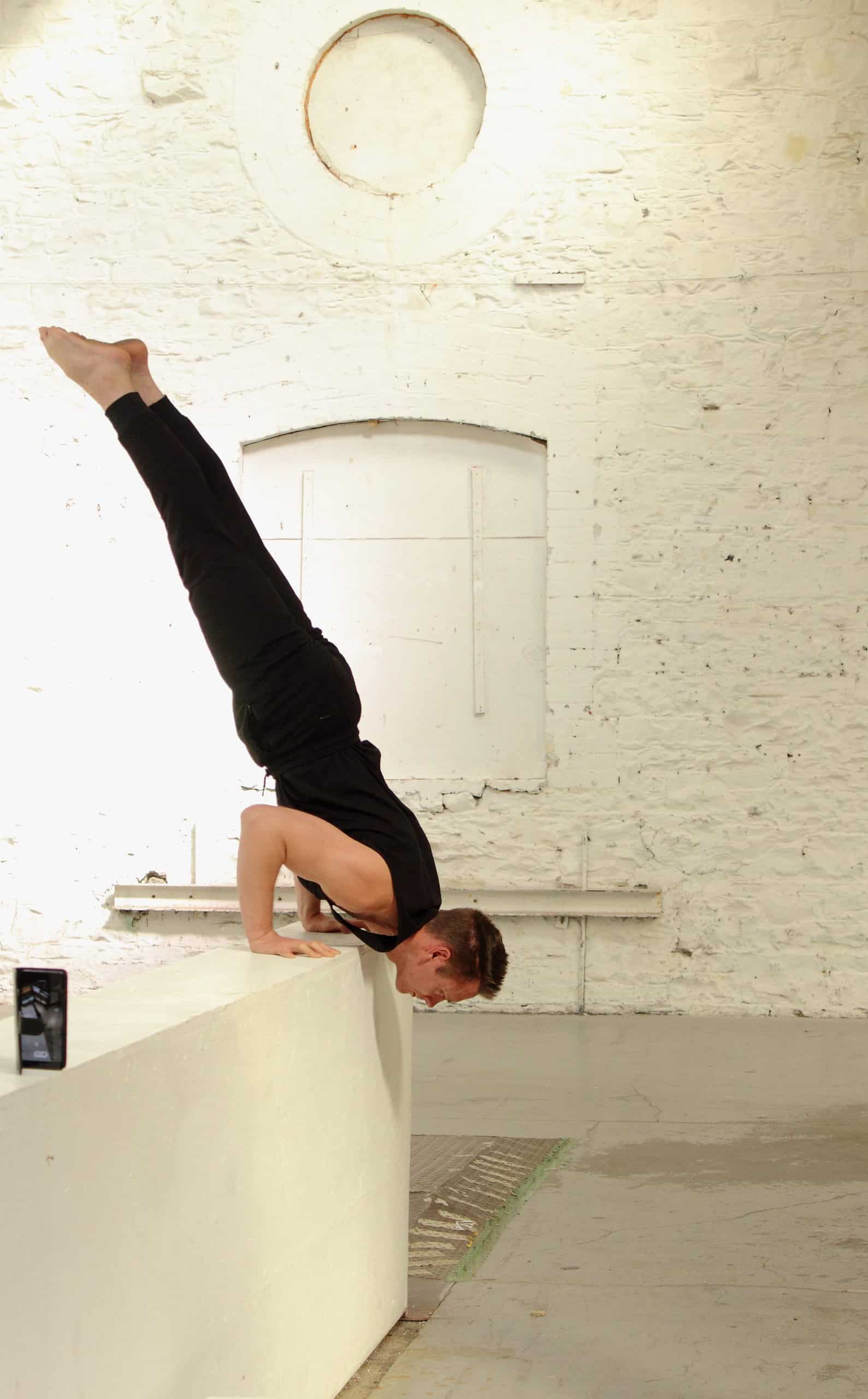
OUR APPROACH TO HANDBALANCING
Our programs teach handbalancing using a technique that is expansive – it leads to a structure that is efficient and elegant and can be used to develop towards the higher level skills such as different two arm handstand shapes, and later even the one arm handstand. There are many different styles of handstands out there, some may balance in an arch, some may balance in more of a planche position – these are all valid in their respective contexts and usages. This program, however, works on the premise of the straight handstand from a combination of traditional Russian handbalancing with alternative strategies of developing awareness and coordination upside down.
 OUR APPROACH TO HANDBALANCING
OUR APPROACH TO HANDBALANCING
Our programs teach handbalancing using a technique that is expansive – it leads to a structure that is efficient and elegant and can be used to develop towards the higher level skills such as different two arm handstand shapes, and later even the one arm handstand. There are many different styles of handstands out there, some may balance in an arch, some may balance in more of a planche position – these are all valid in their respective contexts and usages. This program, however, works on the premise of the straight handstand from a combination of traditional Russian handbalancing with alternative strategies of developing awareness and coordination upside down.
More in depth about the HSPU program
HSPU
Your Handbalancing Instructors
Mikael Kristiansen and Emmet Louis are both international teachers of handbalancing and flexibility and have spent big chunks of their lives studying and understanding all aspects of these skills professionally both as performers and teachers. With Handstand Factory, they now want to demystify and simplify the process of learning handstands, and make it accessible to anyone wanting to learn to stand on their hands. To learn more about Handstand Factory, head over to our about page.

FAQ
How long can I use the HSPU program?
The program is designed to lead you to achieving a freestanding, full range of motion Handstand Pushup. How long this will take, and so how long you will be using the program for, depends largely on your starting point, your frequency of training, and your capacity to recover and gain strength. It also depends highly on the individual both in terms of training history as well as the body, especially when thinking about relative limb length and the levers involved.
Do I need equipment to train the HSPU program?
The Handstand Factory programs are designed to be trained with little to no equipment. The most important things are a flat floor and a free wall. However, as you begin going for the full range HSPU from an elevated surface, boxes or a bench would be useful, but you could also use parallettes. For the accessory work, things you might need are bands, a chin-up bar and some light weights.
Can I integrate the HSPU program with my regular strength and conditioning training?
Yes, of course. It is absolutely possible to integrate the HSPU work into your regular upper body strength and conditioning training, as well as using it as a stand alone training program.
Can I integrate the HSPU program with other Handstand Factory Programs?
Yes, absolutely. The earliest stage you would begin working on the HSPU program is when you have successfully graduated from the Push Program, or are on the final templates of Push working on longer holds of the freestanding handstand. You can then run it alongside Keep Pushing, Press, or even Push Harder, depending on what your handbalance interests are.
Do I need a training partner to do the HSPU program?
Nope, the way that the HSPU program is designed means there is no need for a partner and that everything can be done independently. Saying that, training with others is fun, so by no means do it alone!
Are the Handstand Factory programs follow along videos?
No, all of our online programs are educational in nature, they don’t contain videos in which you follow the training in real time like a class. The video library for each program contains explanations and demos for each exercise, with valuable cues and insights. These exercises are also explained in the manual, and lastly, programmed into comprehensive training templates that you can follow in your own time.

